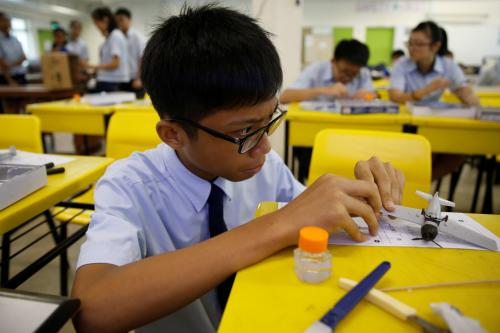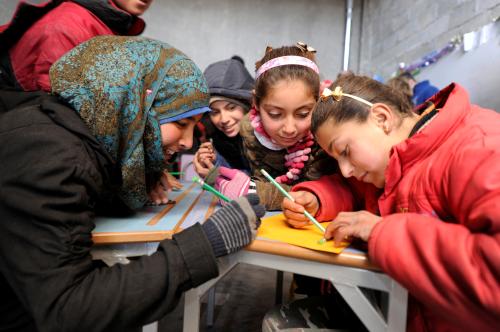This is the first in a four-part blog series on the assessment of 21st century skills.
We hear constant claims that technology will facilitate access to better educational opportunities and facilitate independent learning, and we read statistics on the expansion of mobile phone coverage. However, this increased access has not spread equally throughout the world. A recent Annual Status of Education Report (ASER), for example, notes that 61 percent of 14-18-year-olds in India had never used the internet, and 56 percent had never used a computer—with significant differences in access across boys and girls. To what degree do high-tech solutions for education represent real solutions, now, for children in developing countries?
Another challenge for modern education is “ivory tower” research, an epithet used to refer to concerns disconnected from everyday life and the fact that many universities focus on publishing scholarly and incomprehensible academic articles that will be read only by a select few. How do we accelerate the learnings from academic research and demonstrate their usefulness in the real world?

In our recent chapter in the third volume of the book Assessment and Teaching of 21st Century Skills, we reviewed four large-scale assessments of 21st century skills (problem solving, collaborative problem solving, information and communication technology [ICT] literacy, and global citizenship) and suggest that if high-tech environments and ivory tower research is to be useful, it needs to think about what is “authentic”.
Authenticity refers to how well an assessment resembles the complexity of real-life situations. For example, if the skill to be assessed is collaborative problem solving, asking learners to rate themselves on “how good are you at solving problems collaboratively?” is less authentic than having students participate in a group task that requires them to pool their resources and skills together, take different perspectives, and communicate effectively to solve a complex problem.
We specifically focused on five dimensions of authenticity when reviewing the large-scale assessments:
- Assessment task: The activities and tasks are similar to those that would be carried out in the real world, with respect to the required knowledge, skills, and attitudes.
- Physical/Virtual context: The context in which the tasks are delivered mirror those that will be encountered in professional practice, including the number and kinds of resources that are available and the amount of time that is allocated to complete the task.
- Social context: Social processes involved in the task should resemble the social processes that are likely to occur in a real-life situation. This does not mean all tasks need to be undertaken with others; however, if the skill requires collaboration, then the tasks should allow for collaborative interactions.
- Assessment result: The output should be similar to the kind and amount of output that students would be asked to produce in the real world, for example, a presentation of the work. In addition, there should be enough task items and multiple indicators to fairly assess the skill.
- Criteria and standards: The level of performance expected should be set and made explicit beforehand, and should be related to a realistic outcome.
The assessments we reviewed, which were primarily developed for summative purposes, ranged from more traditional assessments, such as self-reported measures of attitudes and values, to more innovative ones that capture the processes in a computer-based environment that simulates real-life scenarios. Similarly, the degree to which these assessments were authentic varied across the five dimensions. For ICT literacy tasks, assessed in computer-based environments, the assessment mode is well aligned with the environment in which the skills are used. There are also innovative approaches to assessing problem solving and collaborative problem solving skills that capture processes using modern technologies as students progress through rich online tasks. However, for global citizenship, assessment approaches are more traditional, such as self-rating scales of characteristics, values, and attitudes, despite it being a complex set of competencies that includes not only values and attitudes, but also cognitive and social processes. This raises the question: are we actually capturing the social and cognitive processes that constitute the skills? How can we better capture these? And importantly, how can we better bridge the gap between ivory tower research and classroom practice?
In this blog series, we will present examples of transfer from high-tech environments and ivory tower research that can support teachers in their efforts to teach in 21st century classrooms. Watch this space!
The Brookings Institution is committed to quality, independence, and impact.
We are supported by a diverse array of funders. In line with our values and policies, each Brookings publication represents the sole views of its author(s).








Commentary
From ivory towers to the classroom: How can we make academic research useful in the real world?
January 30, 2018